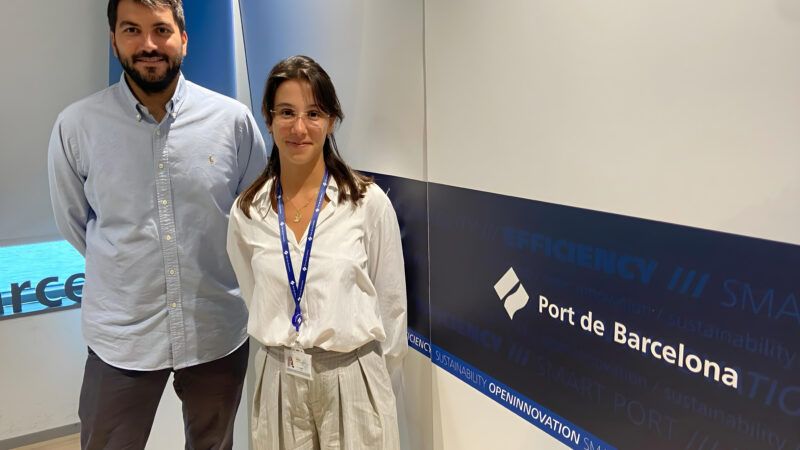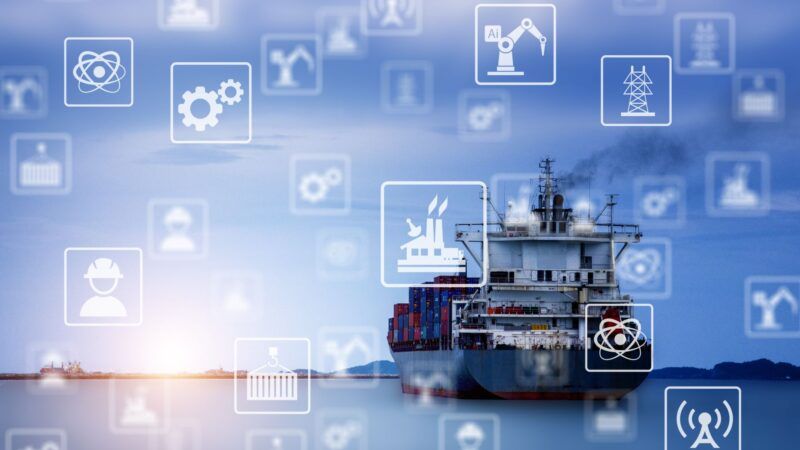The digital and sustainable transformation of ports: a snapshot of an industry in full revolution
The global port industry finds itself navigating deep and not always safe waters. The International Association of Ports and Harbours (IAPH) has presented its 'World Ports Tracker 2025', a benchmark annual report that analyses sustainability and market trends by examining 81 ports worldwide. The document reveals a sector that is decisively advancing towards digitalisation and decarbonisation, although it faces complex challenges.
A survey-based report, a snapshot in a changing environment that helps clarify the main challenges, threats and opportunities in the maritime, logistics and port sector.
The World Ports Tracker 2025, conducted by experts Theo Notteboom and Thanos Pallis for the International Association of Ports and Harbours (IAPH), reveals a geopolitically complex world, with spectacular technological changes and the race-against-time challenge of sustainability.
A true change of gradient on the blue horizon that should be reviewed step by step, and we do so with the help of Ingrid Boqué, Director of Institutional Relations at the Port of Barcelona.
- «The World Ports Tracker represents a very useful and guiding tool that the IAPH makes available to the sector. Beyond data collection, it offers a global and comparative vision that helps ports better understand their operational environment, identify trends and anticipate market changes. Furthermore, it allows contrasting one's own evolution with practices that other ports and regions are already implementing, which enriches strategic reflection and fosters collective learning, and can even play a fundamental role in decision-making», she explains
En este sentido, Boqué considera que el informe es especialmente valioso «como instrumento de autoevaluación, ya que facilita un análisis crítico de las prioridades, capacidades y áreas de mejora de cada organización en relación con los avances globales».
She also highlights that this information is provided mainly by port authorities, who openly share their strategies and priorities in the short and medium term. «This willingness for transparency and collaboration contributes to generating a shared knowledge base, useful for the entire sector and fundamental for comparison and mutual learning between ports», contextualises Boqué.
For her, the thematic areas identified by the IAPH - digitalisation; infrastructure; health, safety and security; environmental care; community strengthening and social cohesion; and energy and climate «have in common, for the most part, the need for solid technological support to advance. Digitalisation allows, for example, optimising energy consumption, managing renewable sources, improving logistics connectivity, reinforcing cybersecurity, monitoring environmental quality and making data-based decisions. It is, therefore, a necessary condition for the sustainable and resilient transformation of ports», she specifies.
And it is precisely with digitalisation that we begin this summary of the World Ports Tracker 2025.
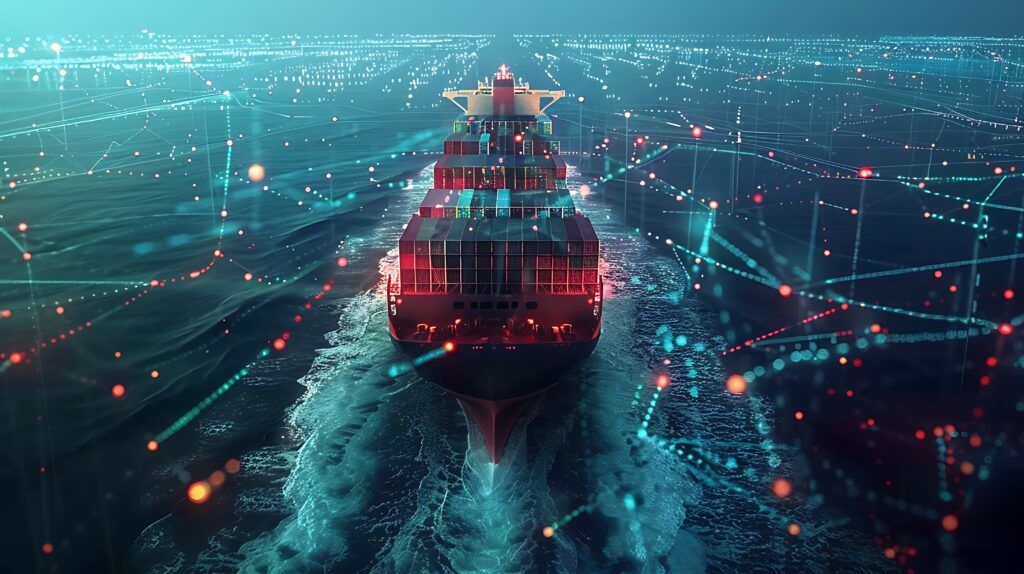
The digital revolution: between opportunities and cyber threats
As Boqué maintains, digitalisation continues to be a structural catalyst, especially when linked to emerging technologies. In fact, digitalisation has ceased to be a future promise to become an operational reality. One example: 53% of ports participating in the IAPH report already use drones in their daily operations, mainly for aerial inspections of port infrastructure and superstructures.
- Accelerated technology adoption
Furthermore, the report notes that more than half of the ports have implemented automation and robotics solutions, from fully automated container terminals to the use of Robotic Process Automation (RPA) technologies for administrative tasks.
The Internet of Things (IoT) has found its place in 41% of ports, through smart sensors and devices for real-time monitoring of various port assets and vehicles. These sensors collect data on location, temperature, humidity and other parameters, facilitating predictive maintenance, asset tracking and supply chain management.
All this highlights, as Boqué points out, the emergence of new professional roles within ports, such as data specialists, cybersecurity managers, digital twin operators, immersive communication systems technicians (VR/AR), and heads of open innovation and collaboration with start-ups. «These profiles reflect how digitalisation not only transforms processes, but also organisational structures and the competencies necessary to lead change», she explains.
- Artificial intelligence as a catalyst
But what is on everyone's lips is, undoubtedly, artificial intelligence. AI is already present in 37% of the ports surveyed, being applied in a wide range of fields.
5G technology, implemented in one-third of ports, offers ultra-low latency connectivity and greater bandwidth, enabling more reliable and faster communications between IoT devices, systems and port management platforms.
However, more advanced technologies such as digital twins (20% adoption) or quantum computing (1%) are still in initial phases, although their transformative potential is considerable.
- The cybersecurity imperative
One of the most concerning findings in the report reveals that cyber threats top the list of risk factors perceived by port authorities. An impressive 62% of ports consider cyber attacks as a high risk, with an additional 30% classifying them as a moderate threat.
In response, 83% of ports consistently consider cybersecurity when implementing emerging technologies, and 47% are part of cybersecurity coordination networks with other actors in the maritime supply chain.
A clear example, Boqué points out, is the recent publication of the Cyber Resilience Guidelines for Emerging Technologies (June 2025), which emphasises that cybersecurity must be integrated by design in any digitalisation process, including the energy transition. This document, developed with the participation of international experts, underlines that secure digitalisation is essential to guarantee trust and effectiveness in the adoption of technologies such as AI, IoT, 5G or automation.
- Digital infrastructure consolidating
In terms of port and maritime digital solutions, Port Community Systems (PCS) are operational in almost half of the participating ports, with another 18% advancing towards their implementation.
53% of ports are in countries that have already implemented the National Maritime Single Window (NMSW), complying with the mandate of the IMO Facilitation Convention (FAL), which since January 2024 requires all member states to have an operational NMSW.
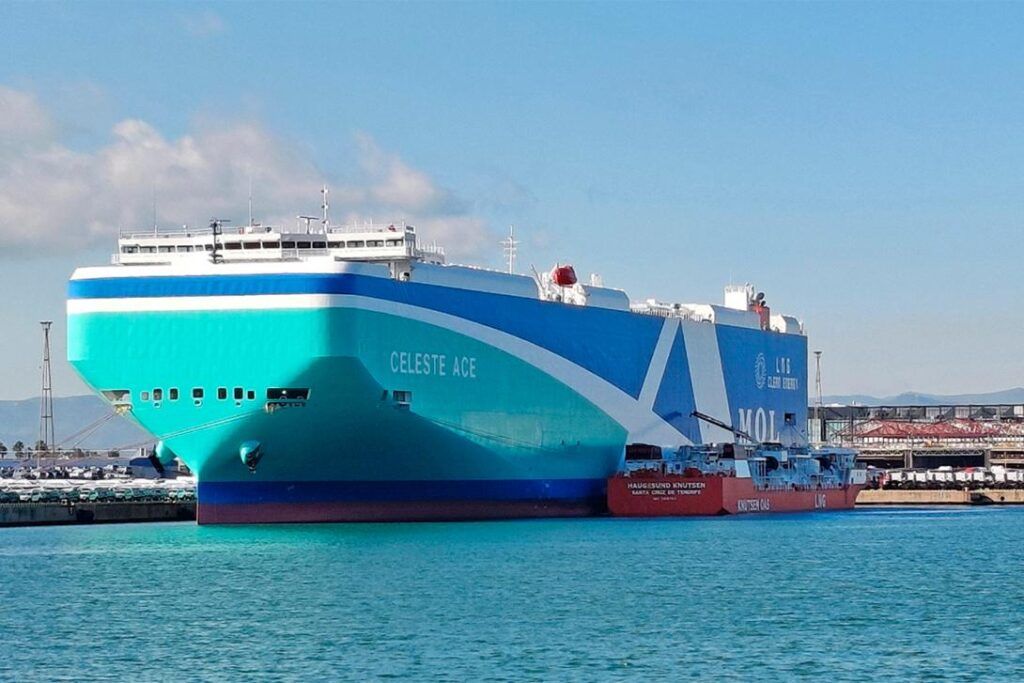
The energy challenge: between opportunities and cyber threats
The energy transition has become an unavoidable strategic priority for global ports. However, the path to decarbonisation presents considerable challenges. More than half of the ports surveyed (51%) are situated in the 0-25% range of renewable energy in their total electricity consumption, although a promising 14% already exceed 76%.
Ingrid Boqué notes about this section that «it is confirmed that only LNG and biofuels show significant progress as port commodities, while fuels such as methanol, hydrogen or ammonia still require clear regulations for bunkering operations. In the field of renewable energy, solar energy clearly dominates as the main source of self-generation in ports.»
- The current renewable energy landscape
A concerning fact is that 28% of ports indicate being "uncertain" about their proportion of renewable energy, suggesting that port authorities do not always have complete access to energy data for the entire port area.
Regarding zero-carbon fuels, the situation is even more challenging: 60% of global ports report that these fuels represent less than 5% of their total fuel consumption mix, with 35% expressing uncertainty about this data.
- Solar energy as protagonist
Solar energy clearly leads port renewable initiatives: 80% of ports that produce renewable electricity on-site use solar energy. This massive adoption is due to the versatility of solar installations, which can be located on flat rooftops, vacant port land and even in innovative floating or vertical configurations.
In contrast, only 15% of ports have wind installations in their port areas, mainly located on breakwaters and cargo terminal sites.
- Alternative fuels: the future under construction
The alternative fuels landscape shows uneven but promising development. LNG is operational in 33% of ports and biofuels in 24%, positioning themselves as the most technologically mature alternatives.
Methanol, with CO₂ emissions 10-15% lower when of fossil origin, but almost zero when produced from biomass (bio-methanol) or renewable sources (e-methanol), shows considerable progress, although it requires specialised handling due to its lower energy density compared to diesel.
For their part, ammonia and hydrogen remain in early adoption stages, facing significant challenges: ammonia generates zero CO₂ emissions if produced using renewable energy, but is highly toxic and requires new engine technology; hydrogen also produces zero CO₂ emissions when originating from renewable sources (green hydrogen), but presents complications in storage and distribution.
- Carbon measurement and reporting: a growing commitment
58% of global ports are taking the extra step by publicly declaring targets to achieve carbon neutrality before 2050, a commitment that goes beyond current regulatory requirements.
In terms of measurement, 29% of ports do not regularly measure their carbon footprint, while half of ports extend their carbon footprint calculations to include partially or totally Scope 3 emissions, and only 9% limit their calculation solely to Scope 1 emissions.

Infrastructure: advances and opportunities
Investments in port infrastructure continue to advance firmly, Boqué explains, «especially in container terminals, which lead expansion plans compared to other segments. This dynamic confirms ports' willingness to adapt to the demands of global trade». The World Ports Tracker report also notes that these infrastructures are increasingly linked to sustainability objectives, albeit unevenly.
- Onshore power supply: gradual progress
The implementation of Onshore Power Supply (OPS) systems shows gradual but consistent progress. 25% of ports have already implemented OPS for port and auxiliary vessels, while 17% have these facilities for container ships, 10% for cruise ships and ferries.
Progress is lower for other types of vessels: only 4% of ports offer OPS for bulk carriers and tankers, reflecting the technical and economic complexities of implementing these technologies for different types of ships.
- Carbon capture and storage: emerging technology
Although Carbon Capture and Storage (CCS) has not yet seen widespread adoption, 6% of surveyed ports report having some form of CCS in operation, with an additional 3% in the implementation stage.
This emerging strategy helps ports and surrounding heavy industries decarbonise and achieve climate targets, especially where emissions are difficult to eliminate. The future utilisation of captured CO₂, for example in the production of synthetic fuels, promises to offer additional circular economy opportunities.
- Circular economy: from concept to implementation
The circular economy gains significant ground in global ports. The most notable progress has been achieved in the beneficial use of dredged material: 44% of ports have implemented solutions in this area, with an additional 8% advancing towards implementation.
Circular initiatives around heat and cold reuse and industrial symbiosis are less common, probably because they require the appropriate local industrial ecosystem to prosper, as is the pioneering case of the Port of Barcelona.
- Hinterland connectivity: the modal challenge
The study results show that the combined participation of rail and inland waterways in the modal split of the hinterland for containerised cargo is below 25% for approximately 61% of surveyed ports. At the opposite extreme, this combined modal participation exceeds 50% in one-tenth of ports.
This modal distribution reflects significant challenges in promoting more sustainable intermodal and synchromodal solutions, as well as in incentivising the use of more ecological transport modes to reduce the environmental impact of hinterland transport.
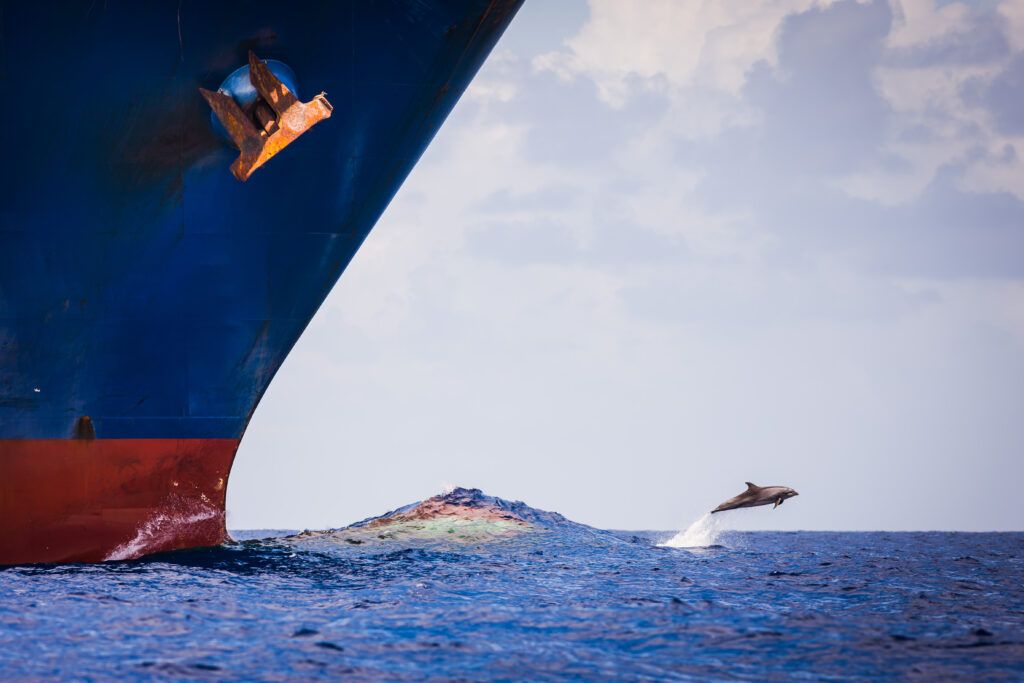
Towards integral sustainability management
Ports focus their environmental monitoring efforts on water and air quality, while aspects such as underwater noise receive less attention. «Although 58% of ports have declared carbon emission reduction targets, monitoring of emissions at the three scope levels (scope 1, 2 and 3) continues to be limited», Boqué summarises.
- Environmental monitoring: a consolidated practice
The port sector demonstrates a solid commitment to environmental monitoring. 80% of ports monitor water quality, while 79% do the same with air quality, considering not only emissions from ships, terminals, industrial facilities and land transport modes, but also factors such as cargo dust during loading/unloading and odours from certain bulk cargoes.
In contrast, underwater acoustic pollution is the least monitored (only 11% of ports), despite the fact that it can come from multiple sources such as ship engines, auxiliary generators and construction or dredging operations.
- Environmental certification: evolving standards
In environmental certification, the landscape shows gradual adoption of international standards. 44% of port authorities have obtained ISO 14001 certification, the most widely recognised Environmental Management System standard, which emphasises continuous improvement through the Plan-Do-Check-Act cycle.
20% have obtained certification from EcoPorts' Port Environmental Review System (PERS), the only environmental management standard specific to the port sector. PERS incorporates the primary general requirements of recognised environmental management standards while considering port specificities.
8% of ports have EMAS (Environmental Management and Audit Scheme) certification, a specific scheme developed by the EU that goes beyond ISO 14001, emphasising public transparency more strongly.
- Ecological restoration: investment in biodiversity
A high 63% of respondents indicate having proactively invested in ecological restoration as part of the port's broader environmental policies and responsibilities. These initiatives include restoration of coastal wetlands (mangroves), artificial reefs and habitat structures, creation of bird habitats (nesting areas and marshes), green buffer zones and ecological corridors, fish passage and spawning habitats, and dune and beach regeneration.
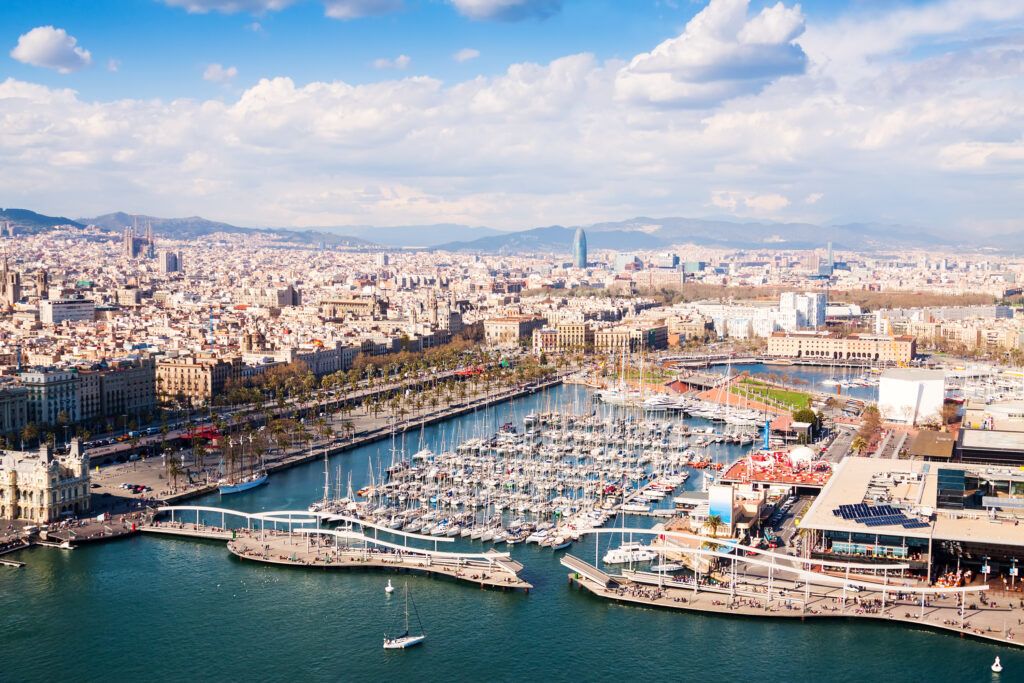
Community building: the port as a social actor
Community building continues to be a priority for ports, Boqué highlights about the IAPH study, «although the presence of women in management positions or on boards of directors is still insufficient», she specifies.
- Citizen participation and transparency
The results reveal that almost three-quarters of ports regularly organise events open to the public as part of their community outreach programmes. Furthermore, 70% of ports have established procedures and structures to facilitate systematic consultation with community interest groups as an integral part of their decision-making processes.
60% of respondents have invested in educational and training programmes aimed at skills required for the current and future port workforce, attracting talent to the industry. Just over half of port authorities have invested in supporting vulnerable local communities, reducing poverty and addressing inequalities.
Health, safety and security: preparation for multiple risks
- Risk landscape
Natural disasters and climate change are considered high-risk factors by 44% and 38% of ports, respectively.
Rising sea levels, more frequent and intense storms, and changing climate patterns are increasing the risk of flooding, infrastructure damage and port operations disruptions.
![]()
Emerging challenges and future opportunities
In the operational field, Boqué highlights, «the increase in ship size and volume per call has led to a reduction in movements per hour in many regions». The regional analysis of these trends is still pending, she explains, «which will allow members to extract even more value from the collected information».
This territorial dimension will provide context and specificity, facilitating better interpretation of results and a more adjusted application to the realities and priorities of each port or region». What there is clear evidence of, as recorded in the IAPH study, «is that ports are strengthening their resilience against disruptions, both operational and geopolitical», Boqué emphasises.
- The impact of geopolitics on port operations
Although geopolitical considerations are considered a high risk by only a quarter of respondents, recent events such as the Red Sea crisis have demonstrated how geopolitical tensions can rapidly reconfigure trade routes and port connectivity.
Geopolitical impacts differ strongly by port. Ports located in politically unstable regions face risks from civil unrest, government changes or policy changes that could affect port operations or access to key trade routes.
- Innovation in port management
One-third of ports have established an innovation department, while 11% report having a Chief Innovation Officer within their authority. Other initiatives include developing an innovation hub or centre (such as incubators) and access to corporate venture capital funding.
- Workforce challenges and future competencies
60% of ports have invested in educational and training programmes aimed at competencies required for the current and future port workforce, but the speed of technological change requires a more accelerated and systematic approach.
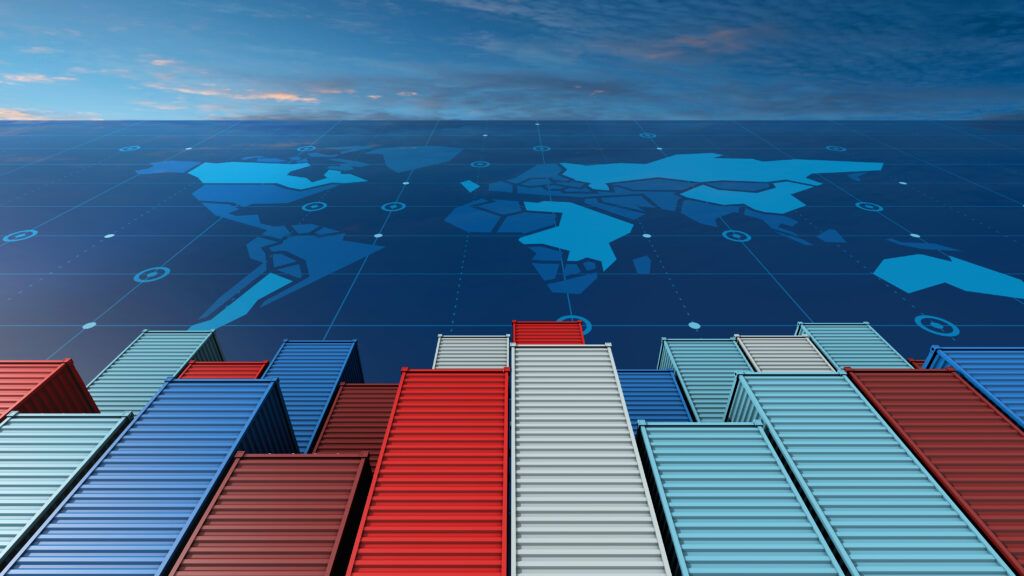
A sector in accelerated transformation
The IAPH World Ports Tracker 2025 paints the portrait of an industry in accelerated transformation, where sustainability and digitalisation are no longer future options but operational realities of the present. The ports that lead this transformation will be better positioned to face the challenges of international trade in the coming decades.
The data reveals a sector that, despite facing complex and multifaceted challenges, demonstrates capacity for adaptation, innovation and commitment to ambitious environmental and social objectives. The convergence of digital technologies, renewable energies, alternative fuels and circular economy practices is fundamentally redefining what it means to be a port in the 21st century.
However, the path to full sustainability and digitalisation requires addressing persistent challenges:
- the productivity gap caused by larger ships
- the need to strengthen cybersecurity
- the importance of developing adequate human capabilities
- the urgency of securing sufficient funding for necessary investments.
This report confirms that the global port sector is at a historic turning point. The decisions made in the coming years will determine whether we achieve a successful transition towards a truly sustainable and resilient port model.
- The port industry of 2025 witnesses a silent but profound revolution that is redefining the rules of the game of international trade. The future belongs to those ports that know how to successfully navigate this complexity, integrating technological innovation, environmental responsibility and social commitment into a coherent and executable vision.
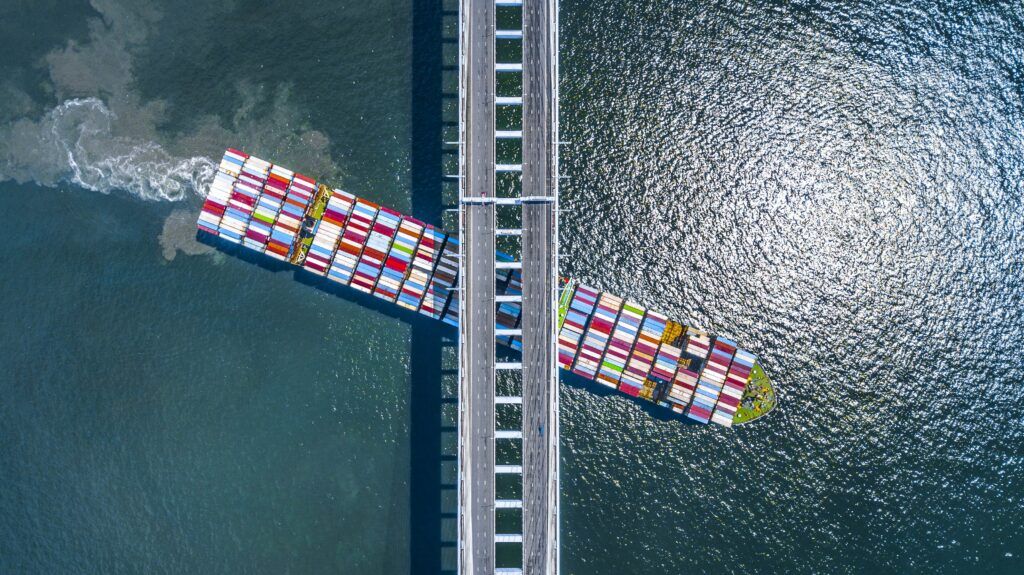
What a study like the 'World Ports Tracker' is for
According to Ingrid Boqué, this data is especially useful «not because it serves us to define the work plan from scratch, but because it allows us to validate and adjust the lines of action we already have defined. The World Ports Tracker has been a key tool for obtaining specific information on aspects we consider priorities within our roadmap. A notable example is the field of digitalisation: despite the advances achieved so far, significant efforts are still needed to effectively implement systems such as the Maritime Single Window (MSW), the Port Community System (PCS) and/or Just-in-Time (JIT) solutions in ports», she summarises.
- Through the collected data, she explains, «we can contrast our initial estimates with the sector's reality, identify deviations or unforeseen opportunities and, if necessary, reorient ongoing initiatives to maximise their impact among members. This dynamic adjustment capacity allows us to act ensuring that the actions we promote truly respond to the current needs and challenges of ports, IAPH members».
The path is traced, the challenges identified, and the tools available. Now it is up to each port, each port authority and each actor in the maritime ecosystem to assume their responsibility in this transformation that will not only benefit the sector, but all of global society.



